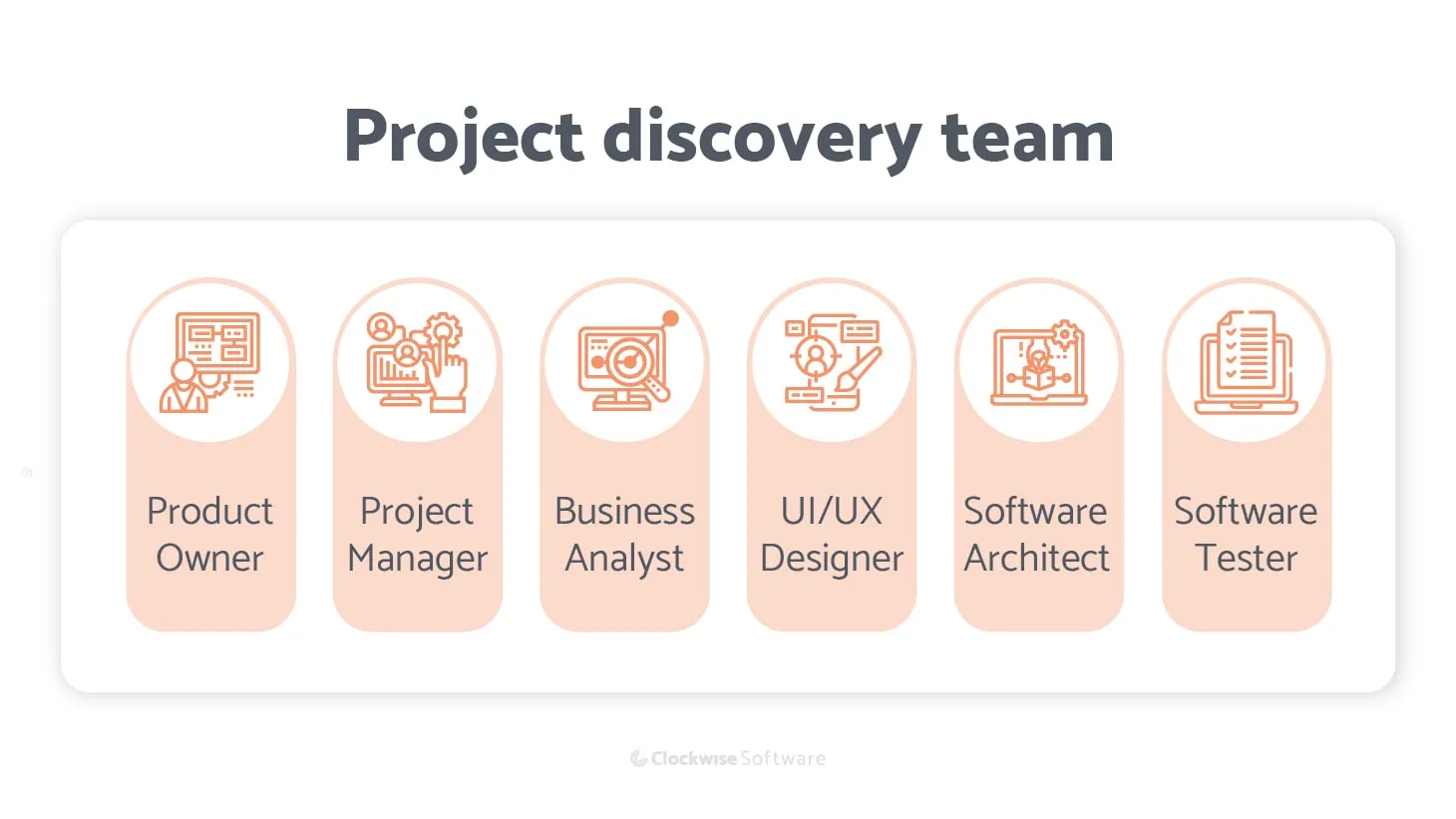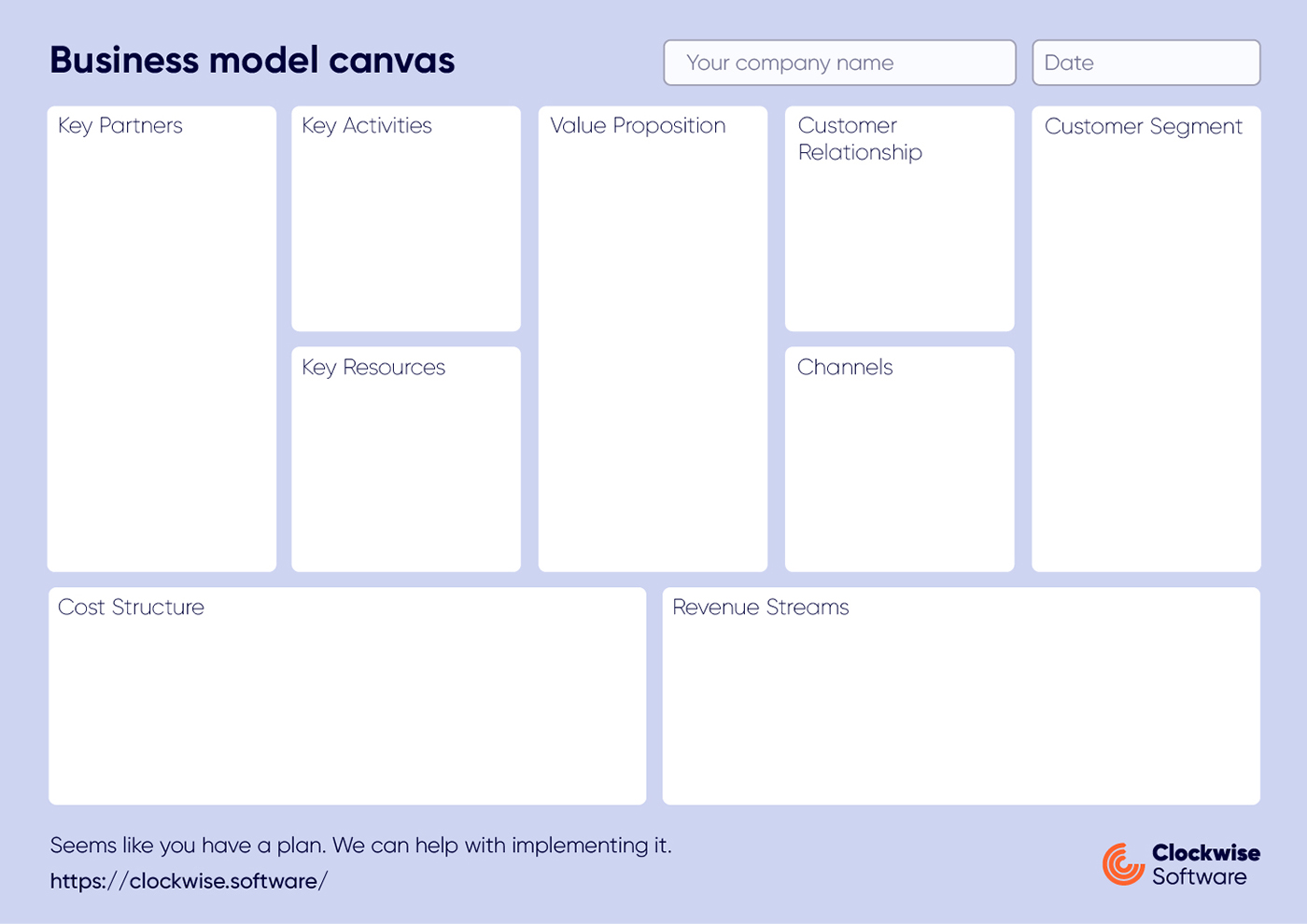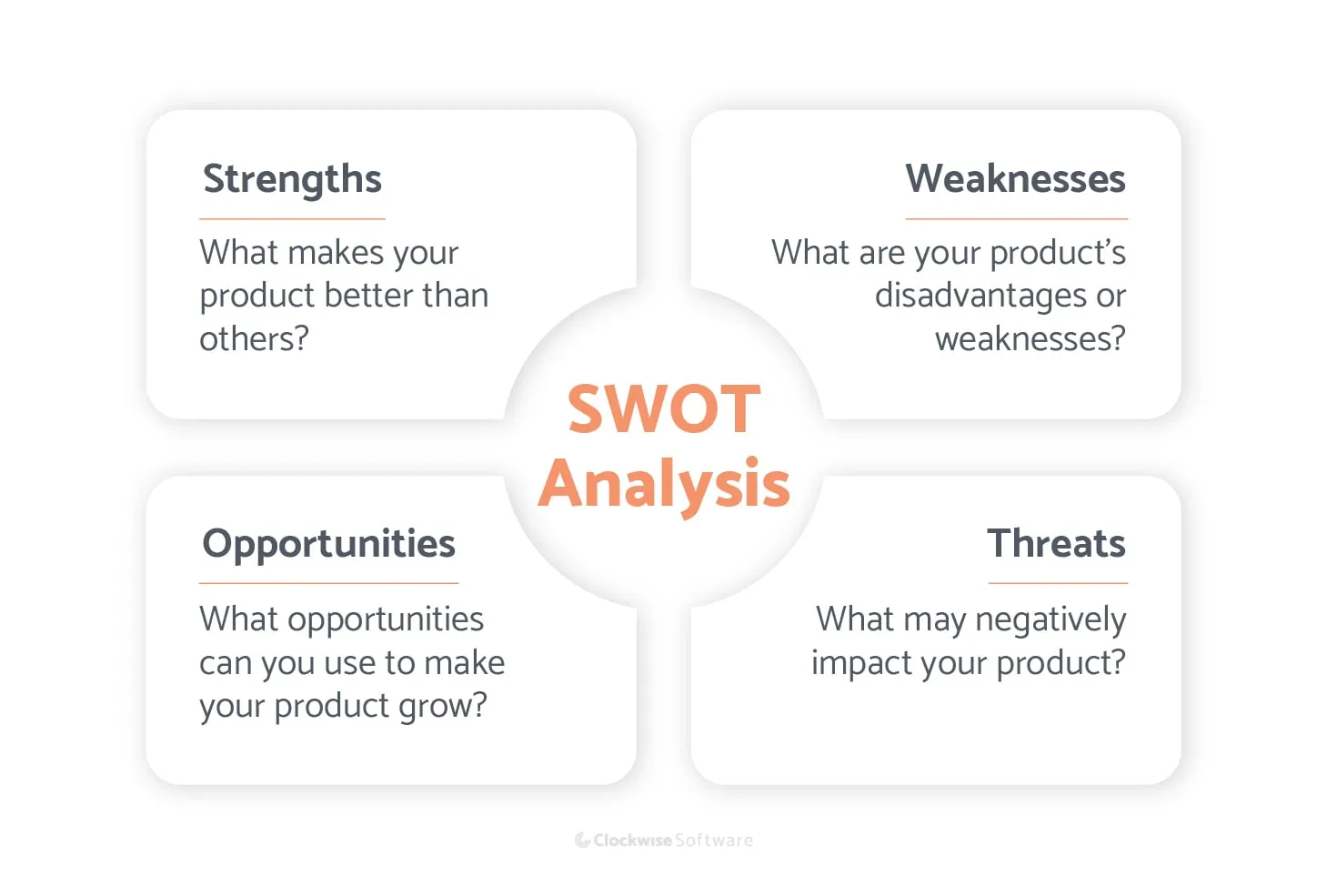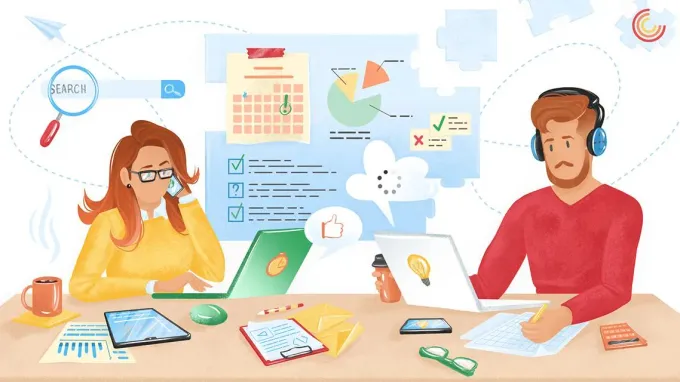What we do
Services
Experts in
When starting software projects, founders believe that their products will succeed. But eventually, many of them fail.
Why does this happen?
For example, look at the top reasons for startup failure:
These reasons are common not only for startups but for any IT project, whether companies attempt to build new software or try to improve existing products.
The issues that cause failure are well-known and may sound obvious, yet many product founders often fall into the trap of thinking these issues won’t affect their projects. And when they do, founders feel caught off guard.
But there’s a way to protect your product from these issues: software product discovery services.
Project discovery is the initial phase of any software project. It helps prepare for development so that the project execution will be smooth and effective. During this phase, you:
Knowledge obtained during a project discovery phase helps you avoid many common development mistakes — your project starts with a clear plan and product vision.
Today, you’ll learn how to ensure your product’s viability. Find out why project discovery is so important, who’s involved in it, and what it looks like.
Companies often underestimate the meaning and importance of market research and analysis — essential components of the project discovery phase. It may seem like this data-driven process just holds you and your team back from making real decisions, taking action, and making progress. In reality, a well-planned discovery phase with valuable deliverables is the springboard for every product launch.
The project discovery phase provides reliable answers to three critical questions:
1. Should I really create this product?
Products fail when they don’t solve a market problem.
This is the most common reason young businesses fade away. Launching an impeccably designed application means nothing if no one wants to use it. It’s just wasted time and money sprinkled with destroyed ambitions.
One of the key goals of the discovery phase is to make sure there’s demand for a solution. Project discovery shows whether there’s space among competitors and a gap in users’ satisfaction that your app can fill.
During the discovery phase of a software project, you make sure that your product idea is really worth the effort.
2. What needs to be done?
Building a product that fully matches your idea is impossible without defining every single piece of functionality needed to support your business goals and user needs. Moreover, if you start developing without an understanding of the scope of work, you risk experiencing scope creep.
Project discovery helps translate business and user needs into product requirements and outlines the scope of work. It’s your chance to thoroughly plan all components of your app and the qualities it must meet to deliver the exact value you want it to.
The discovery phase helps you identify product requirements that will ensure your product fulfills its purpose.
3. What resources and budget are needed to develop the product?
Another way of asking this is How much does it cost to build the software? or How long does it take to build a product from scratch? These questions are hard to answer. If you try to find the answers on Google, you’ll only find approximate figures.
No one can provide you with precise estimates without a clear understanding of your idea, your market, your team’s capabilities, your product requirements, and a whole lot of other information.
The project discovery phase is a straightforward way to better understand your product vision and, as a result, get accurate estimates of what’s required to launch it.
The discovery phase helps you define your budget, optimize costs, and develop a strategy for the shortest time to launch.
As you can see, the role of the discovery phase in project management and software development can’t be underestimated. The answers you get during this phase will prevent you from:
All in all, the discovery phase helps you avoid costly mistakes.
You can handle the discovery phase of a project on your own if you follow our guide. However, the process can be complicated and is definitely time-consuming. You’ll need to devote many hours to research, analysis, and design. You’ll dive into the specifics of the minimum viable product (MVP) architecture, decide on the technology stack, and create clear product requirements.
Even if you’re a proficient software engineer, other types of skills may also be needed for discovery project activities. Without them, you’ll create a poor foundation for your project development.
To optimize resources and save time for essential business tasks, you can delegate the project discovery phase to a project discovery team. This team typically consists of specialists with years of experience in software development but slightly differs from the software development team structure.
Let’s meet the team of specialists you’ll need for your project discovery phase:

Product owner
The product owner is the person who had the initial idea for the product, usually the founder. As a founder, you have a clear vision of the product idea and have assumptions about who needs your product and how they’ll use it. During the discovery phase, you’ll explain your idea to your discovery team and work on product analysis and improvements together.
As a product owner, you’ll be involved in product development, but other team members will be responsible for a major part of the analysis and planning, as well as design and development.
Project manager
The project manager (PM) is responsible for ensuring flawless communication, proper planning of the scope of work, and managing the development process. The PM tracks the progress of the project discovery phase, manages specialists involved in the process, documents the scope of work, participates in defining the project’s budget and timeline, and creates a development plan.
Business analyst
The business analyst researches how to meet existing needs with a real business solution. They study potential users’ needs, your business goals, and competitors’ solutions and help define requirements, features, and functionality for your product so it will deliver the desired value.
UI/UX designer
UI/UX designers focus on creating an attractive interface and a seamless user experience. Together with the project manager or business analyst, they study end user preferences to make your product as appealing and easy to use as possible.
Software architect
A software architect analyzes the initial requirements defined by the business analyst and offers tools and methodologies for developing a high-quality app. A software architect develops your product’s architecture and logic and takes part in requirement development, as well as timeline and budget estimation.
QA engineer
The QA engineer develops a testing plan, which is the basis for properly evaluating your MVP. They can also advise on possible risks so a team can create a mitigation plan.
The size of your team may vary from project to project. It depends entirely on the preparation steps you’ve already taken and the deliverables you expect. Some specialists may only be involved for a short period of time. For example, a QA engineer only joins the team when it’s time to create a testing plan and assess potential risks. Others, like the project manager, will participate in project discovery from the beginning to the end.
At Clockwise Software, we help our clients enter the software development process with a clear product vision, well-defined requirements, detailed development plans, and accurate estimates.
Our team has performed the discovery phase for numerous projects, so we know what steps to take to ensure smooth development with minimal risk. Let’s take a look at the main project discovery stages and the steps they include.
The typical product discovery phase consists of seven main stages:
Roles involved: the entire project discovery team
The project discovery process starts with a kick-off meeting. During this meeting, you share your vision with the project discovery team. Together, you then look for answers to the following questions:
This meeting may occur in several sessions. The questions you discuss may differ and may expand depending on the project’s specifics and your requirements. During this stage, you’ll interact with the whole discovery team to develop a lean canvas, or a business model canvas, which is a document containing general information about your product, its unique value proposition, expected revenue, its target audience, and so on. A business model canvas provides a quick, simple, and initial description of your business idea and its purpose.

Share enough details about your needs, objectives, and plans, as well as concerns and limitations. Clear communication of these elements builds a great foundation for further product planning and helps avoid one of the common product roadmapping mistakes — not giving team members a thorough understanding of the business context.
Stage deliverables:
Roles involved: product owner, project manager, business analyst
The only way to reach your business goals with your new product is to give your potential users the design and functionality they want and need. Here’s when a value proposition canvas comes in handy. A value proposition canvas connects the product you plan to launch with users’ real needs.
A value proposition canvas is built on top of a business model canvas or lean canvas. It offers a more detailed, structured description of the customers or users outlined in your business model canvas. In your value proposition canvas, you highlight the value your product will provide.
This document includes two interconnected components — a user profile and a value map — that describe critical features of your user persona and product, respectively. User tasks, gains, and pains fall under the user profile. Product and services, gain creators, and pain relievers fall under the value map.
| Value proposition canvas | |
| User profile | Value map |
| Customer jobs — Problems users want to solve with your app
Gains — Benefits users can expect Pains — Negative experiences users suffer from |
Product and services — All features your app contains
Gain creators — Features that create value for users Pain relievers —Features that address users’ pain points |
The more precisely the components of the customer profile are reflected in the value map, the better the chances of building a valuable product.
Stage deliverables:
Roles involved: business analyst, project manager
Competition is intense and can be cruel. Even if you build an AI-powered SaaS product and think that its AI-powered features are your competitive advantage, existing products may already satisfy user demands and leave no space for your app.
Thus, comprehensive market analysis is the next step of the project discovery phase. What’s the point of researching your target market?
How does a business analyst conduct marketing research? Our specialists do it by following four basic steps:

Research can turn into a time-consuming process if you try to handle it yourself. However, with an experienced team at your back, you can cut the time invested and get valuable results out of routine research.
Stage deliverables:
Roles involved: business analyst, project manager, software architect
At this stage, your team starts translating the business requirements agreed on during previous stages into what’s required of the solution, including the characteristics of your product, what it should be able to do, and how it should do it.
The discovery team defines the major functions and features of your solution, its limitations (what your product doesn’t need to cover), and the non-functional requirements, like desired level of usability, security, scalability, and other software qualities.
An important part of this stage is identifying the dependencies between all solution requirements. Your team may use different techniques to define the dependencies. For example, they may develop user stories and use case scenarios to organize requirements according to user goals they support.
This stage allows you to understand the scope of work and plan the major components of your solution. However, the requirements are not final yet; they will be improved during subsequent steps of project discovery.
Stage deliverables:
Roles involved: project manager, software architect, QA engineer
This stage is crucial for choosing the right architectural approach to match your app goals. It’s also when you:
During this stage, the discovery team prioritizes the essential features of the app and creates a proof of concept (PoC) in the form of a simple technical prototype.
Although creating a PoC is optional, it helps ensure that it’s possible to build specific product features with the chosen technologies.
Stage deliverables:
Roles involved: business analyst, UI/UX designer
The dedicated efforts of a business analyst and a designer bring an interactive, clickable prototype of your app to life. This isn’t the final version of the app. Its purpose is to model the entire user journey and decide on the design of key screens.
The prototype helps you test the UX and make sure the design is intuitive and user-friendly. But an interactive prototype also pursues another critical goal: collecting user feedback so you can improve your product or pivot if needed.
To thoroughly test your idea, your team may deliver several prototypes and compare users’ feedback after trying each of them.
Stage deliverables:
Roles involved: product owner, project manager, business analyst
As the team approaches the finish line of the IT project discovery phase they refine and document everything discovered in previous stages of project discovery. Their process includes creating a precise design plan, a concise app requirement document that describes the functional and non-functional requirements, documentation of the app’s architecture and logic, and a detailed project management plan.
The precise list of documents will depend on your requirements, the project’s needs, and your goals.
Stage deliverables:
Roles involved: product owner, project manager, business analyst
When you described your idea for the very first time at the kick-off meeting, all you could get were rough estimates of the resource you’ll need. The team may have provided you with approximate time estimates and vague answers about the app’s cost.
Now, with a clear vision of your product concept, your goals, and the scope of work, your team can give you a more precise and transparent project estimate. They can also give you a complete plan of action so you know exactly what you need to do to succeed in the target niche.
With a better understanding of what should be done, you can also refine your app business plan.
Stage deliverables:
The duration of the project discovery phase varies widely. A product owner may come to a development team with a definite list of must-have features and a simple mockup. Or a product owner may reach out with only a basic outline of their idea. Thus, the scope of work during project discovery will differ, and so will its cost and duration.
In the table below, you can see cost and time estimate examples for different sets of project discovery deliverables. The small set includes only essential deliverables you need to be ready for development, while the large set includes more comprehensive documentation for your product and therefore involves deeper research and analysis.
To find more detailed information on deliverables in these three sets, and their delivery time and cost, check our whitepaper on project discovery phase cost.
| Small | Medium | Large | |
| Delivery time | 3 weeks | 5 weeks | 8 weeks |
| Cost | $12,000+ | $16,000+ | $25,000+ |
If you want to see a real-life example of project discovery, take a look at our project discovery phase case study.
Our client wanted to improve their existing product, a cost estimation platform, so they requested project discovery to validate their idea, decide on needed improvements, and plan the development process. This project discovery took three months and resulted in numerous deliverables, including:
What you get by the end of the project discovery phase depends entirely on your needs.
How can you find out the precise discovery phase deliverables needed for your project, as well as estimates of the cost and time to obtain them? We provide this information before starting the discovery phase. Contact our team, tell us about your goals, priorities, and requirements, and we’ll use your information to shortlist essential deliverables for your project and provide detailed project discovery estimates.
Based on our experience building software products, the discovery phase is an essential step to ensure smooth development and avoid project failure. Whether you plan to start SaaS development, improve your product’s functionality, or develop a web application for internal use, the proper set of project discovery deliverables will help you execute your project without costly risks.
After project discovery, you’ll be fully ready to start development. Frequently, the same vendor you used to conduct project discovery can become your app development partner. It’s a convenient option, as you don’t need to look for another vendor and can seamlessly transition from discovery to development. Moreover, the team is already familiar with your project specifics, so they’ll execute the project with the smallest details in mind.
You can contact us if you’re looking for a team to conduct a project discovery or execute the project for you. Our product development services, from defining product vision and requirements to executing every stage of development, cover everything needed to launch an excellent product.
